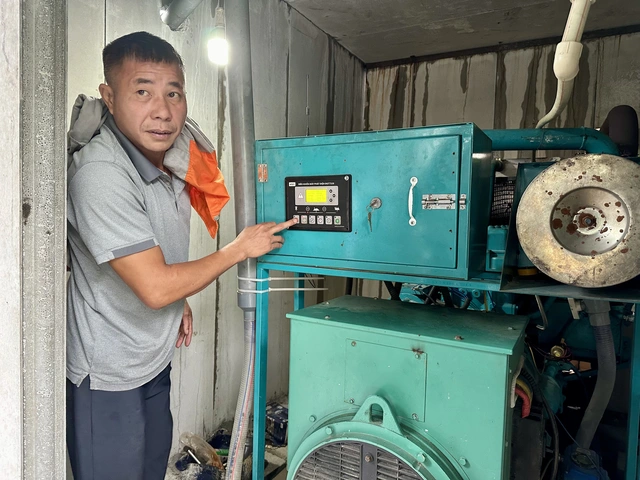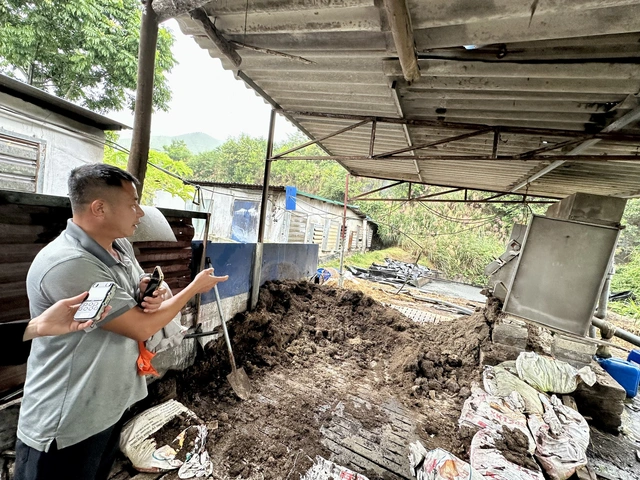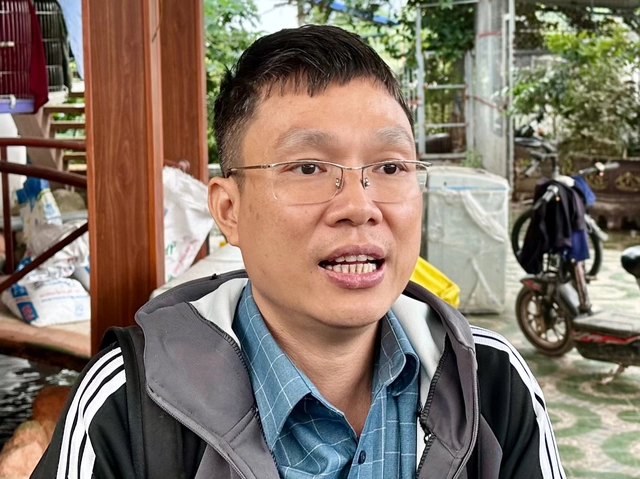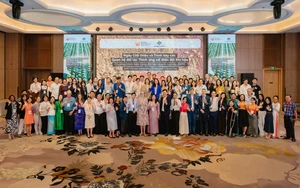
Australia’s green energy support reaches deep into Vietnam’s pig farming sector
At VinFast’s electric bus factory on Vietnam’s northern coast, Australian-backed financing has helped roll more than 150 e-buses off the line as part of the country’s first fully electric public transport fleet.

Pig farmer Tran Xuan Phong operates a biogas generator at his farm in Tan Cuong Commune, Thai Nguyen Province, northern Vietnam, November 18, 2025. Photo: Bao Anh / Tuoi Tre News
The project, arranged through the Asian Development Bank and supported by more than US$50 million in Australian funding, has also expanded Vietnam’s national EV charging network by over 2,000 stations.
But several hours west of this high tech hub, a quieter clean energy shift is underway on muddy farm roads lined with pig barns.
It may prove just as important for Vietnam’s emissions goals.
Pig farming waste to power
In Thai Nguyen Province, pig farmer Tran Xuan Phong walks to the front of his barn and points to a biogas generator humming beside the building.
The system is connected to a sealed pit that captures methane from manure, which once had to be dumped or burned.
“All my operating and depreciation costs for the biogas generator are only about 50 percent of the state electricity price,” Phong said.
“One hour can run 70 to 100 kWh, the lowest is 15 kWh depending on weather and the number of pigs.
“Before, buying electricity cost about VND50 million [$1,895] a month.
“Now it is only VND20 million [$758].”

A slurry pit at Tran Xuan Phong’s pig farm in Tan Cuong Commune, Thai Nguyen Province, northern Vietnam, November 18, 2025. Photo: Bao Anh / Tuoi Tre News
Before, the waste was often discharged into the environment or burned.
With the biogas system, he said, the smell has almost disappeared.
He added that the system has stayed reliable as long as maintenance is done on schedule.
“If you maintain it well and let the machine rest in shifts, it runs well,” he said.
“In a year or a year and a half, the entire machine is depreciated.”
Phong’s farm is one of 98 across Vietnam that have installed generators through the ‘Bioenergy for Commercial Farms’ initiative under the Australian government’s Business Partnerships Platform.
Since 2016, Australia has invested AUD9.4 million ($6.11 million) in Vietnam through the platform, drawing in AUD13.6 million ($8.85 million) in co-funding from partners.
“The governments of Australia and Vietnam are both committed to net zero by 2050,” said Gillian Bird, Australian ambassador to Vietnam.
“The Bioenergy on Commercial Farms partnership under the Business Partnerships Platform is one of many ways Australia is supporting Vietnam’s green energy transition and more sustainable agriculture.
“We are pleased the partnership is helping cut emissions and energy costs as well as creating jobs and new income streams for farmers.”

Pig farmer Tran Xuan Phong points to post-combustion sludge at his farm in Tan Cuong Commune, Thai Nguyen Province, northern Vietnam, November 18, 2025. Photo: Bao Anh / Tuoi Tre News
A market transformed
For Chinh Phat Co., a local generator manufacturer, the project has reshaped Vietnam’s biogas industry.
The company, once focused on diesel generators, joined the initiative after recognizing the technical overlap and receiving project support.
“After the project entered the biogas market, around 60 to 70 percent of livestock farms used biogas generators,” CEO Tong Xuan Chinh said.
“Project funding changed the market almost completely.”
He said the effort spurred new collaboration with universities that previously had limited involvement in biogas system design.
Chinh Phat has installed nearly 100 biogas power systems nationwide, with about 70 percent of those installations located in the northern region.
He added that burning raw biogas at normal temperatures does not fully break down carbon, whereas combustion at 1,800 to 2,000 Celsius degrees in generators meets Vietnamese emission standards.
Tests commissioned by the firm confirm this compliance, he said.

Tong Xuan Chinh, CEO of Chinh Phat Co., explains his company’s role in the ‘Bioenergy for Commercial Farms’ initiative under the Australian government’s Business Partnerships Platform at Tran Xuan Phong’s pig farm in Tan Cuong Commune, Thai Nguyen Province, northern Vietnam, November 18, 2025. Photo: Bao Anh / Tuoi Tre News
Today, biogas power accounts for about 70 percent of the company’s revenue and supports 150 to 200 workers at farm sites.
Across its systems, the company consumes 10,000 to 20,000 cubic meters of biogas a day, producing 10 to 20 MWh of electricity.
Chinh sees future growth in hybrid systems combining biogas with solar and wind and possible expansion into Laos and Cambodia.
While many components are imported, Vietnamese engineers handle integration and software control.
A centralized system now allows staff to manage 150 machines nationwide from a laptop.
From broken trust to new confidence
Project manager Nguyen Thi Quynh Huong from SNV Netherlands Development Organization, which manages the project, said the initiative revived a technology many farmers had abandoned.
“In the past, many farms invested in generators but after one or two years they often broke,” she said.
“Farmers lost trust. The project used the ESCO [Energy Service Company] model so farms do not need to invest in machines.
“Companies provide the generators and sell electricity to the farms.”
An ESCO model is a setup where a company pays to cut a customer’s energy use and gets repaid from the money those savings create.
Because farms pay only for the power they use, often replacing 60 to 70 percent of grid electricity, many have cut monthly costs by about 30 percent.
By late 2024, the project had reduced an estimated 12,000 tonnes of CO2, created 427 operator jobs, trained 40 interns and helped register a Gold Standard carbon credit design.
After renting generators for a time, some farms have chosen to purchase them outright.
Although the formal partnership ended in December 2024, companies continue to expand the model.
“The demand is large and farms now understand the benefits,” Huong said.
Bao Anh / Tuoi Tre News
Link nội dung: https://news.tuoitre.vn/australias-green-energy-support-reaches-deep-into-vietnams-pig-farming-sector-103251119234834571.htm
